Dealing with Complaints: Business English Activities & Worksheets
Customer Complaints
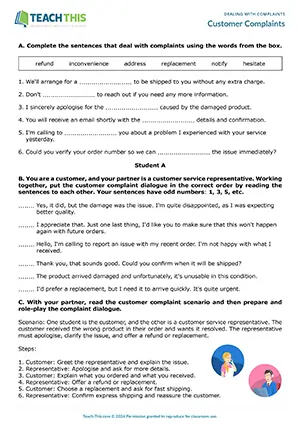
Business English Dealing with Complaints Activity - Vocabulary, Reading, Listening and Speaking: Gap-fill, Ordering, Role-play, Freer Practice - Pair Work
In this dealing with complaints activity, students practice language for dealing with customer complaints and role-play complaint dialogues. First, students...
Dealing with Customer Complaints
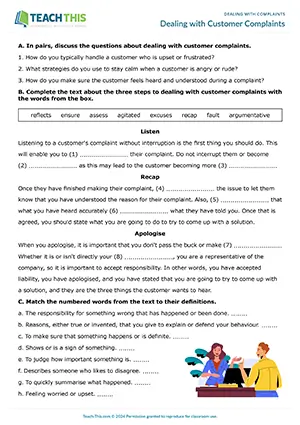
Business English Dealing with Complaints Worksheet - Reading and Writing Exercises: Gap-fill, Error Correction, Ordering - Speaking Activity: Role-Play - Pair Work
Here is a useful customer complaints worksheet to help students learn how to deal with customer complaints. First, in pairs, students discuss questions...
Find Someone Who Can...
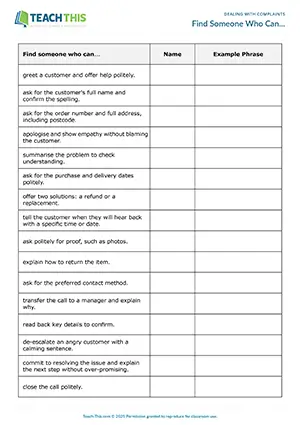
Business English Dealing with Complaints Activity - Speaking: Asking and Answering Questions, Controlled and Freer Practice
In this free 'Find Someone Who' activity on dealing with complaints, students ask and answer questions about customer service language and complaint‑handling phrases. To begin, students review the...
From Complaint to Resolution
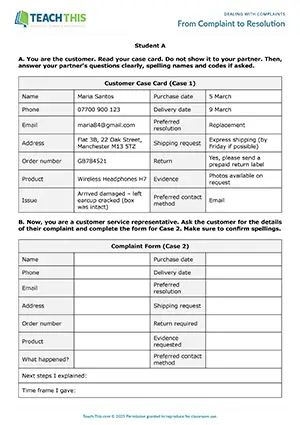
Business English Dealing with Complaints Activity - Speaking: Role-Play, Asking and Answering Questions, Form Completion, Freer Practice - Pair Work
In this complaints‑handling activity, students practice collecting and confirming customer details on a call, clarifying the issue, reading back key information, and...
The Complaint Clinic
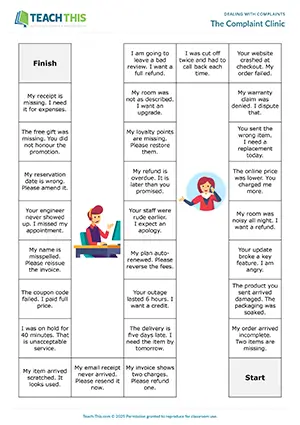
Business English Dealing with Complaints Game - Speaking: Impromptu Speech, Freer Practice - Group Work
In this productive complaint-handling board game, students give 30-second impromptu responses to realistic customer complaints while using professional phrases and techniques. In groups, students...

